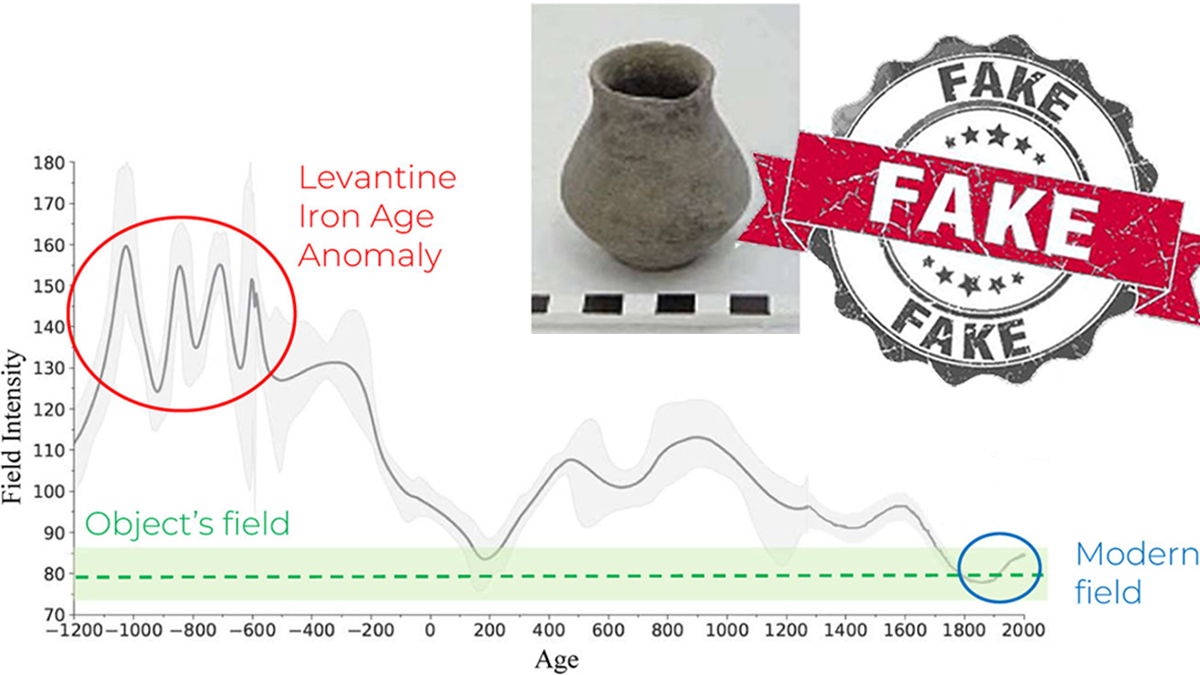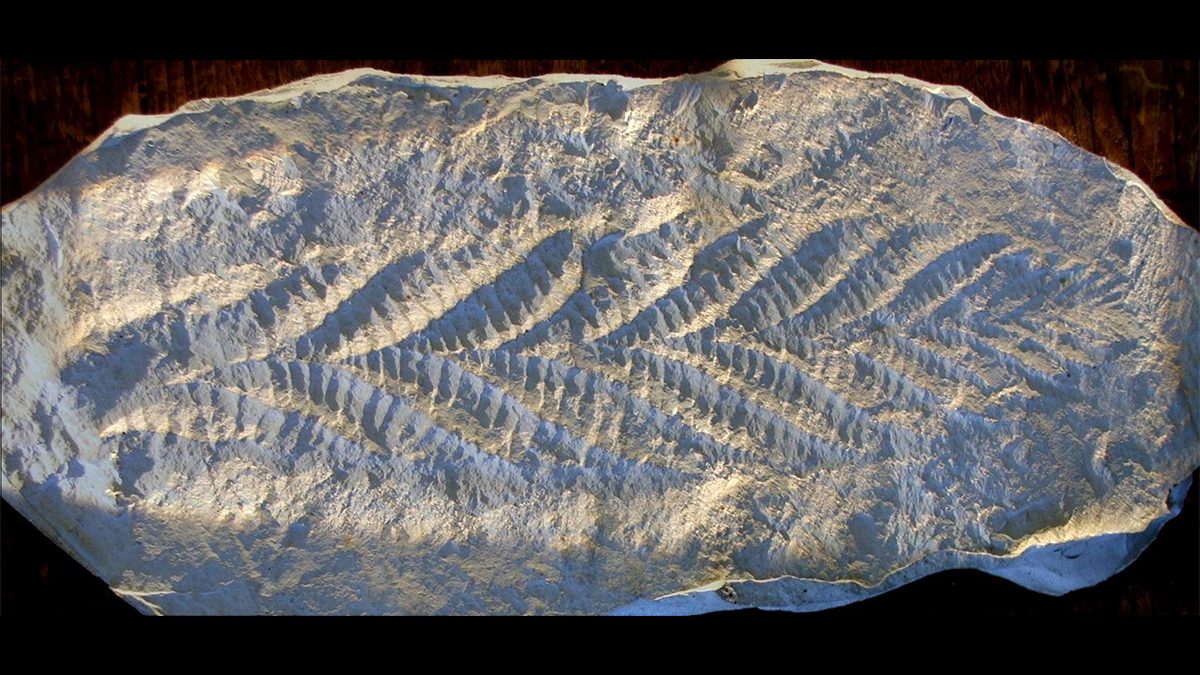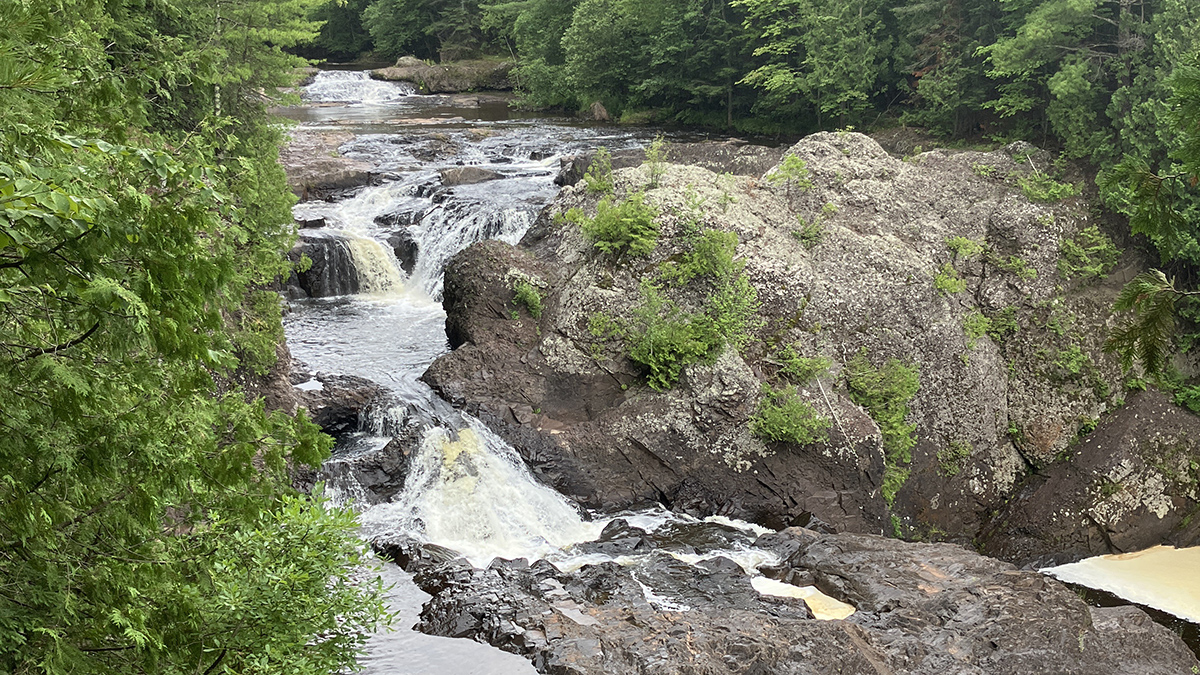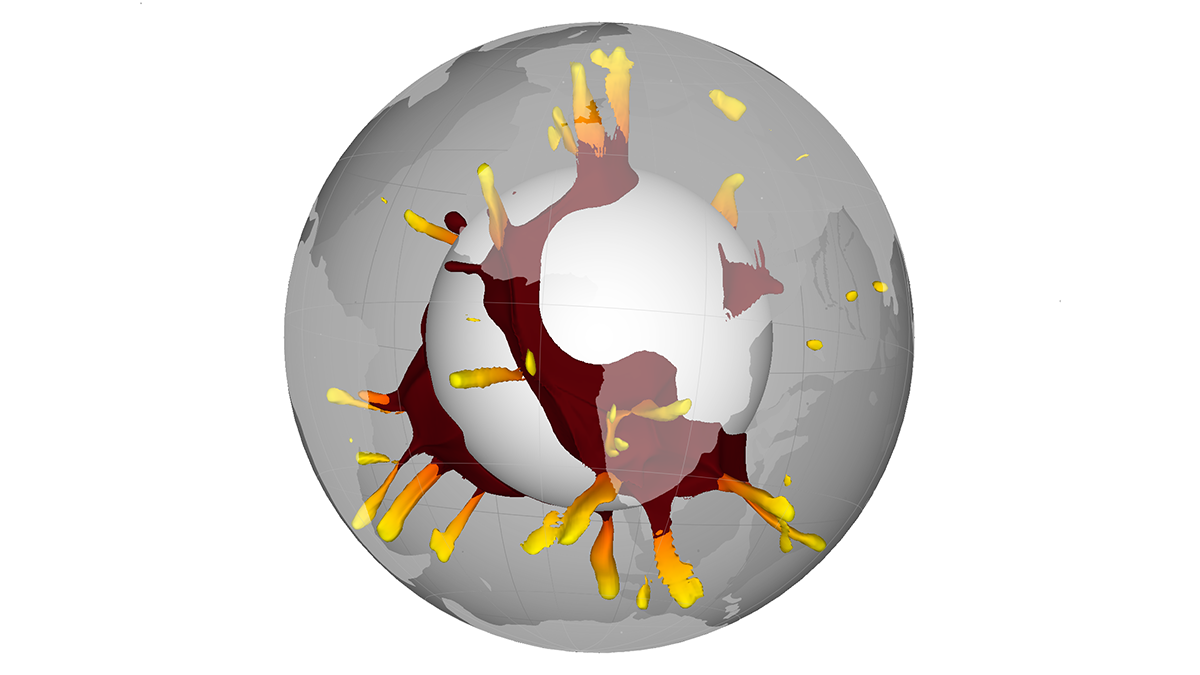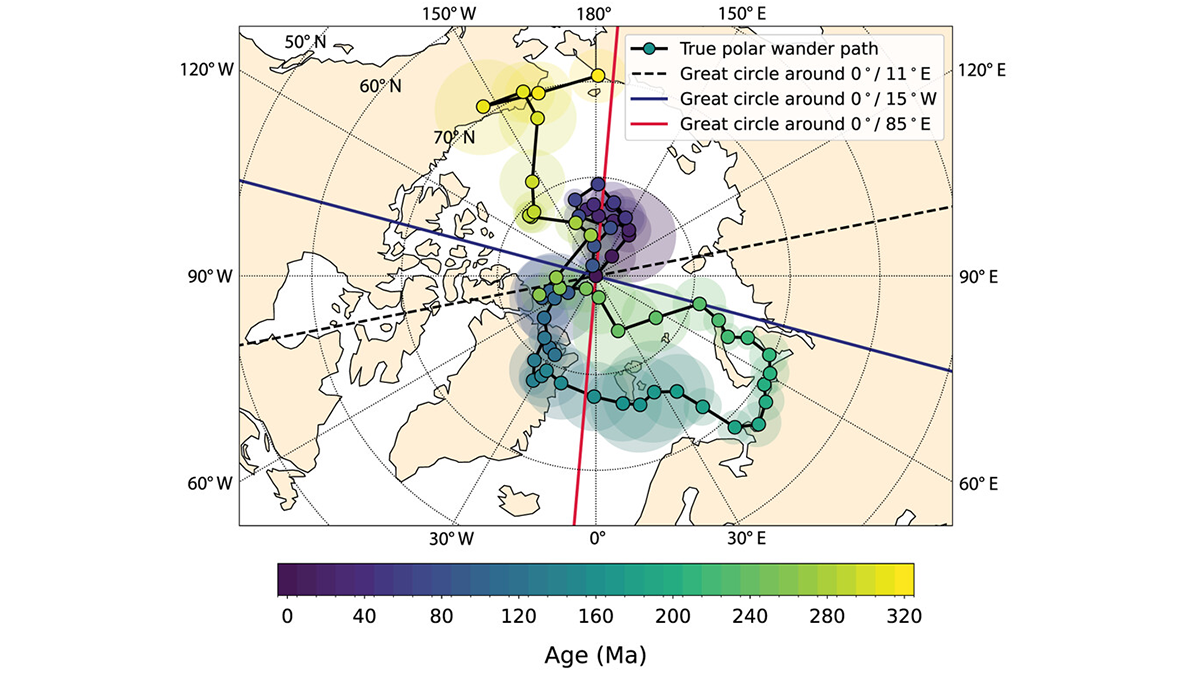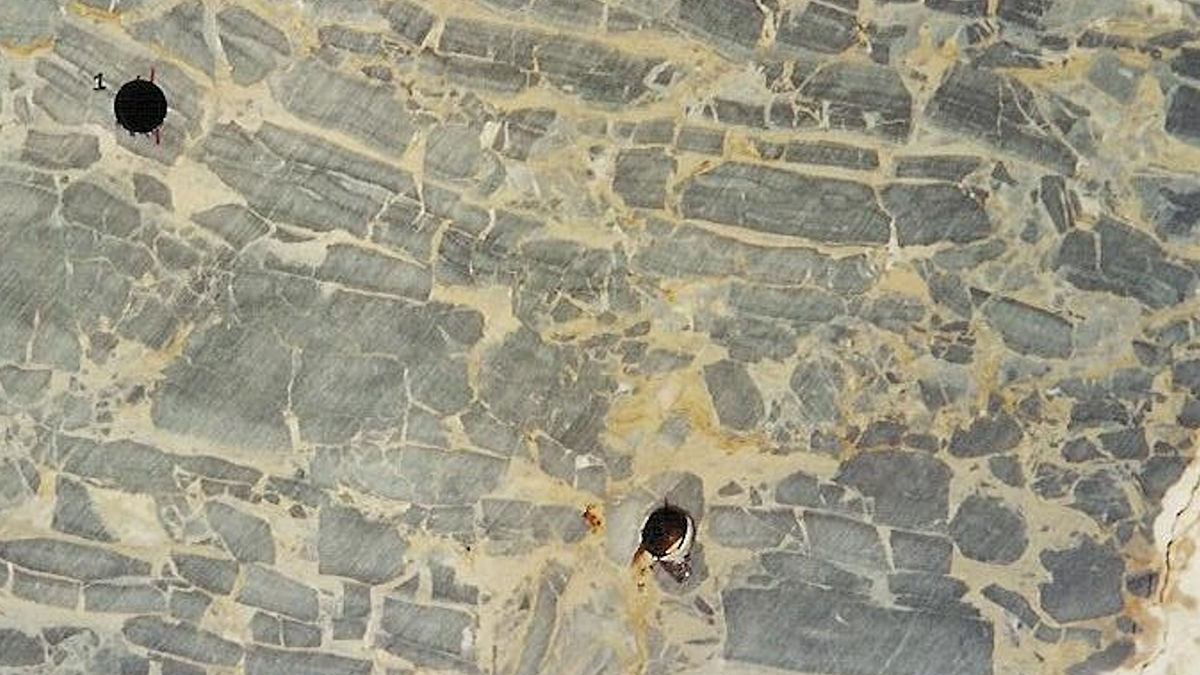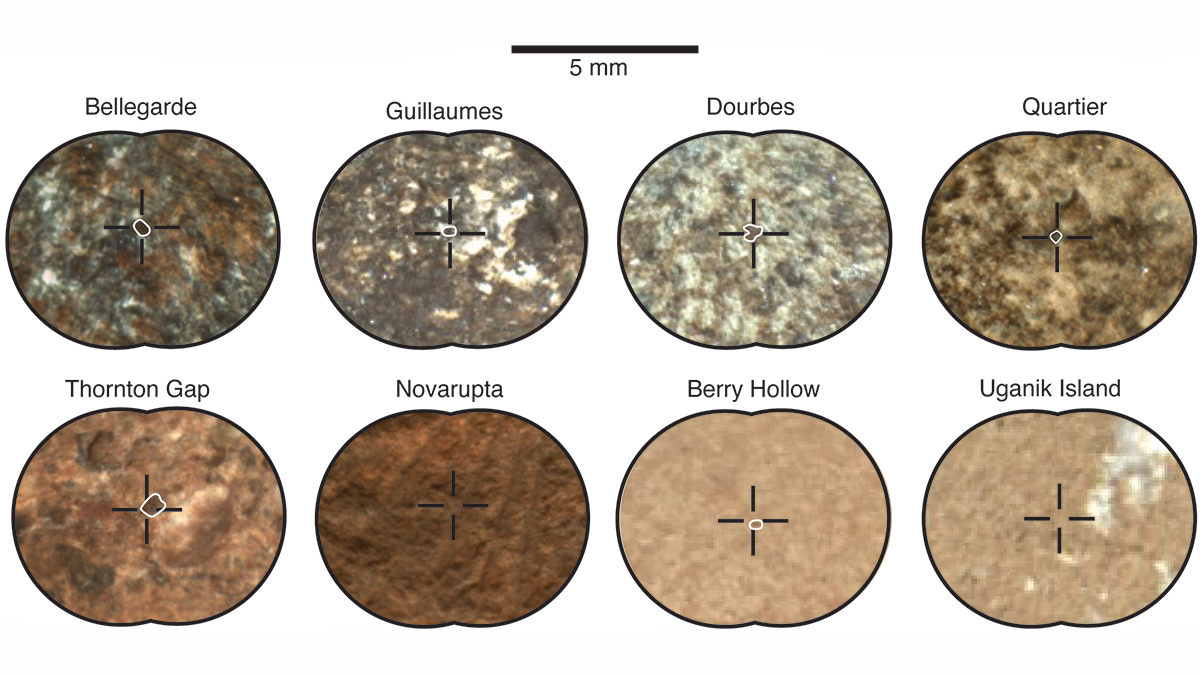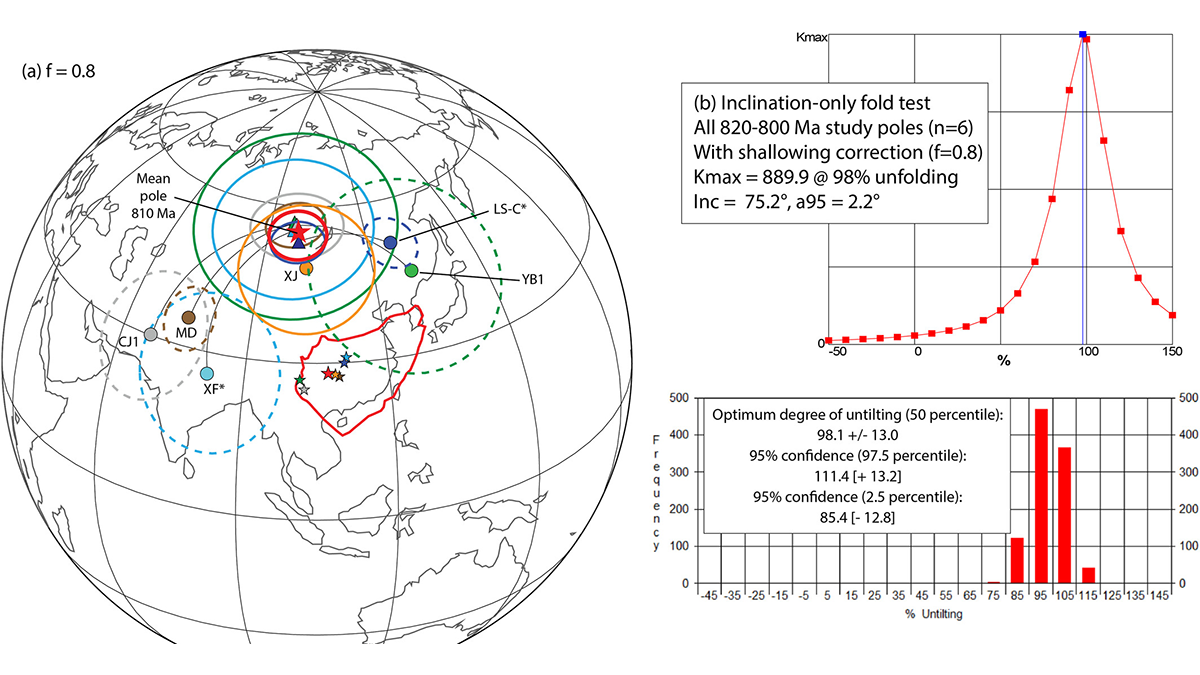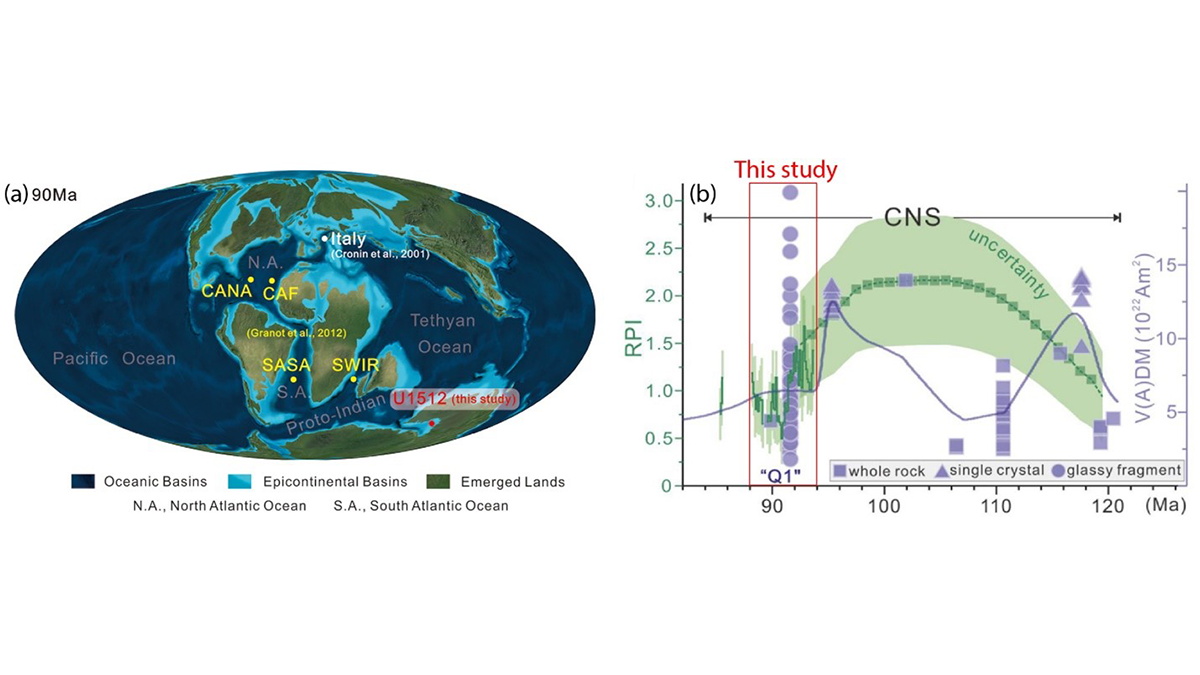Duplicating artifacts that preserve records from biblical times is a lucrative business. A method used for both dating artifacts and reconstructing Earth’s history could identify phony pieces.
paleomagnetism
The Long and the Weak of It—The Ediacaran Magnetic Field
A roughly 70-million-year interval of anomalously weak magnetic field during the Ediacaran period could have triggered atmospheric changes that supported the rise of macroscopic life.
Lakeside Sandstones Hold Key to Ancient Continent’s Movement
Using paleomagnetic samples collected along the shores of Lake Superior, a new study illuminates the movement of a billion-year-old paleocontinent as it crept south toward a tectonic collision.
Blame It on the BLOBs
For decades, scientists have suspected that large volcanic eruptions have their origins in two mysterious massive regions at the base of our planet’s mantle. Now, it’s been statistically proven.
300 Million Years of Polar Wander: Slowly but Surely
A reanalysis of paleomagnetic poles provides tighter bounds on the style and rate of motions of our whole planet with respect to its rotation axis.
Remagnetization Illuminates Tectonic Consolidation of Megacontinents
New rock and paleomagnetic research give evidence for prolonged heating during the Cambrian-Ordovician tectonic consolidation of West Gondwanaland.
The Future of Martian Paleomagnetism
Samples collected by the Perseverance Rover have great potential for providing insights into the history of Mars’ magnetic field.
A Magnetic Low May Have Paved the Way for Complex Life
Multicellular life blossomed when Earth’s magnetic field was at an all-time low.
The Not-So-Quiet Cretaceous Quiet Zone
A new study finds that Earth’s magnetic field intensity varied significantly during the Cretaceous Normal Superchron, providing insights into the operation of the geodynamo during superchrons.

